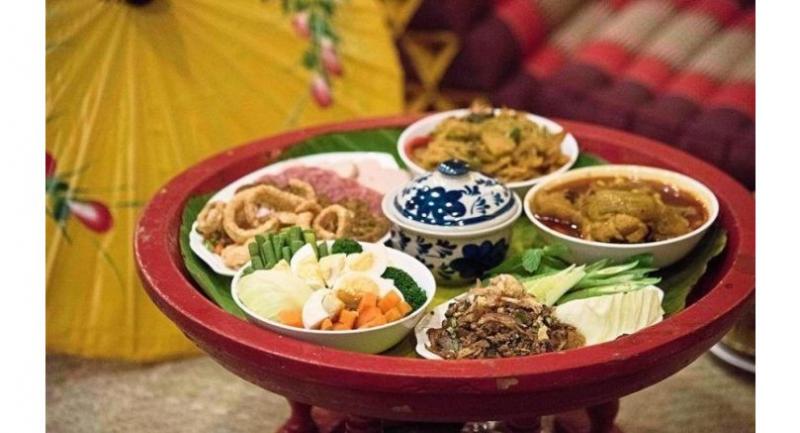Wonderful food of northern Thailand and Krabi

Savour the distinctive tastes of Thailand's far North and South
When it comes to eating out in Thailand, the mantra I subscribe to is this: Go to any stall on the street, order anything off the menu – and prepare to be wowed. That’s the kind of faith I have in one of the world’s best food destinations.
Of course, Tom Yum Goong and green curry are must-eats in Thailand. And Bangkok is the obvious choice to seek out those dishes as it offers special dining experiences. One in particular is at the renowned Joe Louis restaurant at Asiatique The Riverfront. The establishment serves local cuisines while featuring the ancient art of Thai puppetry.
Northern tastes
During my recent sojourn to the Land Of Smiles, as part of the Asean Travel Journo Camp, I steered my culinary pursuits away from the hustle and bustle of the Thai capital to the northern provinces of Chiang Mai and Chiang Rai, as well as a fishing village in Krabi province, in the south.
After an hour-plus flight from Bangkok, I arrived in picturesque Chiang Rai. Despite the relatively short journey, the flavours found here – and in its more popular neighbour Chiang Mai – are worlds apart from those in central Thailand.
The cooler climate has resulted in curries that are milder in spiciness. And there seems to be a passion for vegetables and all things porky!
One term that often cropped up during my time in the north was “Lanna food”. A friendly Thai travel companion told me that Lanna refers to the ancient kingdom that existed in what is now northern Thailand.
Some locals still refer to these places in northern Thailand – Chiang Rai, Chiang Mai, Phayao, Lampang, Nan and Phrae – collectively as Lanna (the old name). In Lanna meals, sticky glutinous rice is used instead of white rice. And the sticky rice is traditionally kneaded into small balls. The novelty lies in its presentation: the rice is kept warm inside a small bamboo basket.
I saw this unique presentation at my first traditional khantoke dinner – with many more to follow. This dining experience – which is unique to northern Thailand – is named after the small round wooden table called khantoke on which food is served. The menu varies, but usually consists of signature dishes that are popular in the region.
At my first khantoke dinner, I savoured Gaeng Hang Lay (a northern Thai-style gingery pork belly red curry), Nam Phrik Ong (a kind of sauce made from dried chillies, minced pork and tomatoes), Sai Oua (spiced pork sausages with hints of lemongrass, kaffir lime leaves and a gentle kick of chilli heat) and Kaeb Moo (deep-fried pork rind).
Kaeb Moo is the epitome of northern Thailand’s obsession with pork. The crunchiness of the rind that’s fried to perfection, paired with green chilli paste, is absolutely delicious!
Another deep-fried food that I enjoyed was Khao Soi – rich and savoury egg noodles. It is one of the speciality dishes of northern Thailand. Part of the noodles are boiled, and part are fried, with the latter portion used as garnish. Meanwhile, the gravy is curry- and coconut-flavoured and is just mildly spicy.
Southern seafood
Pork may be all the rage in northern Thailand, but the meat is conspicuously absent at Koh Klang (or Klang Island) in Krabi. That’s because the majority of the people in this charming fishing village are Muslim.
Great importance is placed on the halal lifestyle (no pork, no dogs, and modest dress).
It takes a five-minute boat ride from Krabi town to get to Koh Klang. Granted, you won’t find resorts or sandy white beaches here.
But traverse off-the-beaten paths and you will be rewarded with some of the most amazing southern Thai food.
The first thing you’ll notice as the boat approaches the dock is the Baan Ma Ying floating restaurant. The seafood is extremely fresh and prepared the halal way here.
Upon my arrival, a worker from the restaurant was hauling the catch of the day from a fisherman’s boat onto the dock – that’s how fresh the seafood is.
You can do no wrong ordering simple dishes like steamed oysters, crabs, prawns and fish.
What elevates the meals here to another level are the age-old family recipes that the establishment follows. The dishes are on the spicier side, but the flavours are well-balanced and extremely tasty.
My king prawns with tamarind sauce had just the right amount of tanginess, while the chicken cooked with cashew nuts was nice and tender.
Meanwhile, the Tom Yum Goong – with its aromatic brew of freshly squeezed coconut milk and lemongrass – was an explosion of flavours… and heat.
But the best thing on the table had to be the humble Khai Jiao, or Thai-style omelette. Cooked with fish sauce and some fresh crab meat thrown in, the omelette was gloriously fluffy and delicious. Definitely worth the boat ride from Krabi town!
Another thing to look out for during meals here is Koh Klang’s signature Sang Yod rice. Rice grown in the high-saline soil of the island has created a distinct flavour in the rice. When cooked, the soft grains stick together, much like glutinous rice.
Most visitors tend to make a quick stop at Koh Klang for lunch. But if you spend the night at a homestay, you can sign up for a workshop to learn the art of tossing Khao Yam.
Khao Yam is a kind of rice salad that features a mix of raw vegetables and herbs. It also contains an assortment of ingredients – dried shrimp or fish, green mango, coconut flakes, galangal and kaffir lime leaves, just to name a few.
When it comes to food in Thailand, there are certainly all kinds of wonderful.
And travelling the extra mile when you’re in the kingdom will unravel many culinary delights!
